Installing SOTI Connect
Before you begin
- Download the SOTI Connect Installer.
- Install Microsoft SQL Server and note the SQL Server connection string. See Installing and Setting Up Microsoft SQL Server Express for details.
- Note of the Fully Qualified Domain Name (FQDN) of the machine where SOTI Connect will be installed
- Close all running Windows Services and Task Manager applications.
About this task
This procedure guides you through installing SOTI Connect using the setup wizard.
Procedure
- Extract the SOTI Connect installation package (.zip file) to a temporary folder.
- In the folder, double-click SOTI Connect Installer.exe and allow the installer to make system changes when prompted.
-
Select Install Connect components, then select
Next.
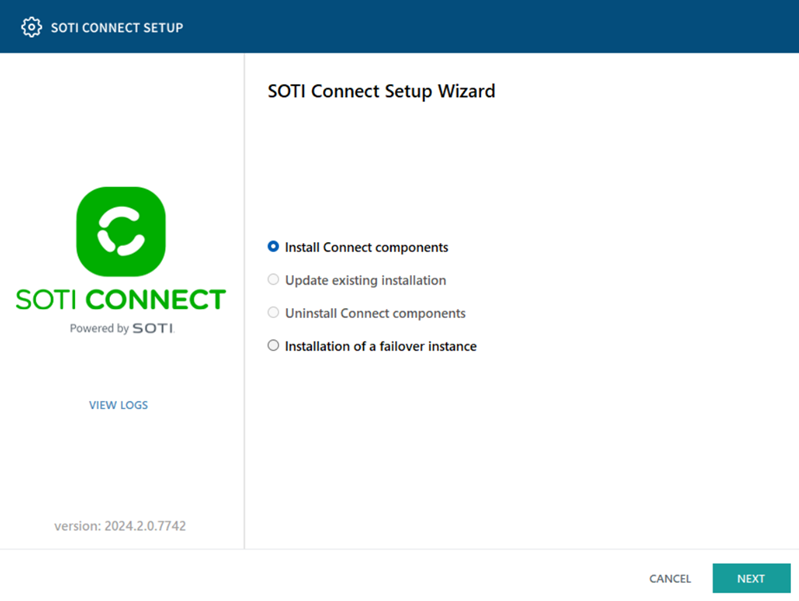
-
Choose Typical, then select
Next.
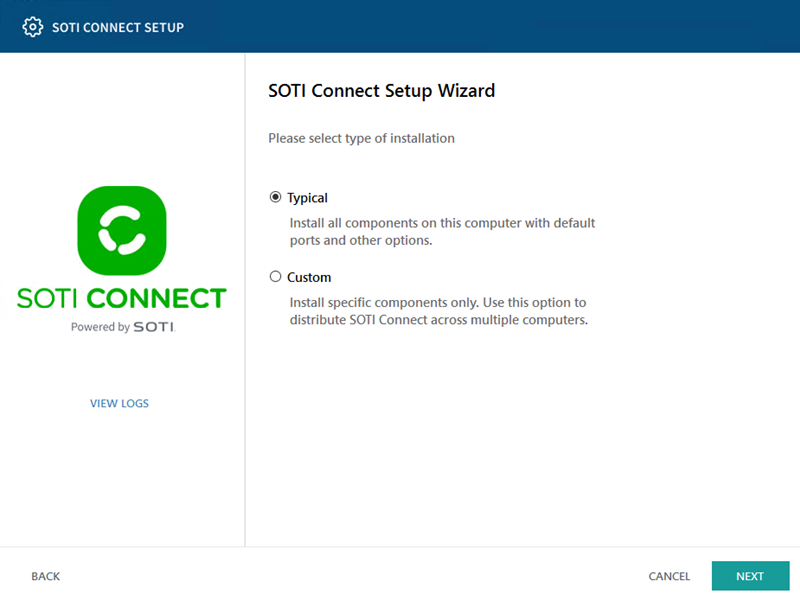
-
On the Management Service configuration screen, enter the
FQDN.
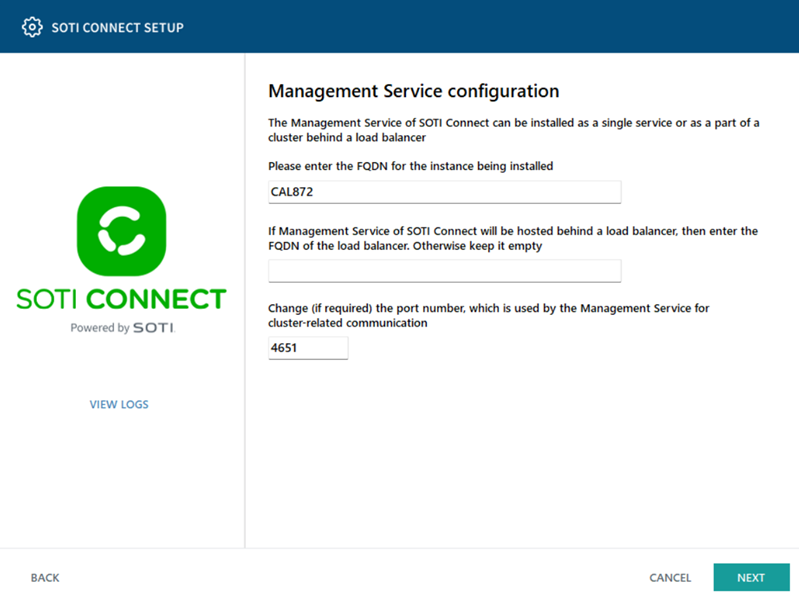 Note: To find the FQDN, right-click Computer in the File Explorer and select Properties. The FQDN is the full device name.
Note: To find the FQDN, right-click Computer in the File Explorer and select Properties. The FQDN is the full device name.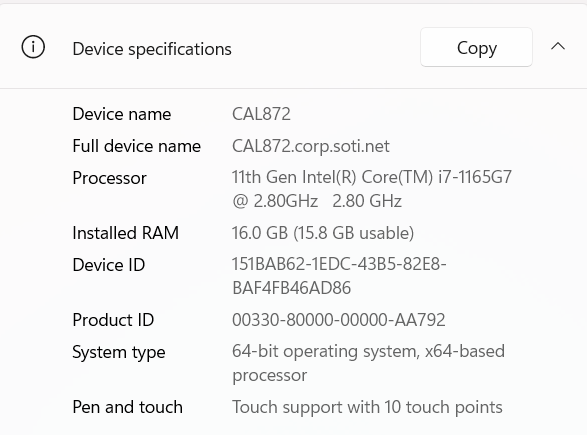
-
Select whether you want to import a root certificate from an existing file or
generate a new one. Then select Next.
Note: Select Export certificate to export the generated root certificate for later use while installing additional Management Service (MS) instances.

-
For HTTPS communication, you need a server certificate. Select one of the
following options and select Next.
Option Description Generate server certificate from Connect Root certificate Select this option to generate and use another certificate from the same root certificate used in step 6. Upload a PKCS#12 server certificate (.PFX) Select this option if you have a certificate file you want to use (for example, one you purchased from a trusted certificate authority). Use a previously installed server certificate from the Windows Certificate Store Select this option if the certificate you want to use is already installed in the Windows trusted store and you know its thumbprint value. This method enables you to specify a password-protected certificate without knowing the password. 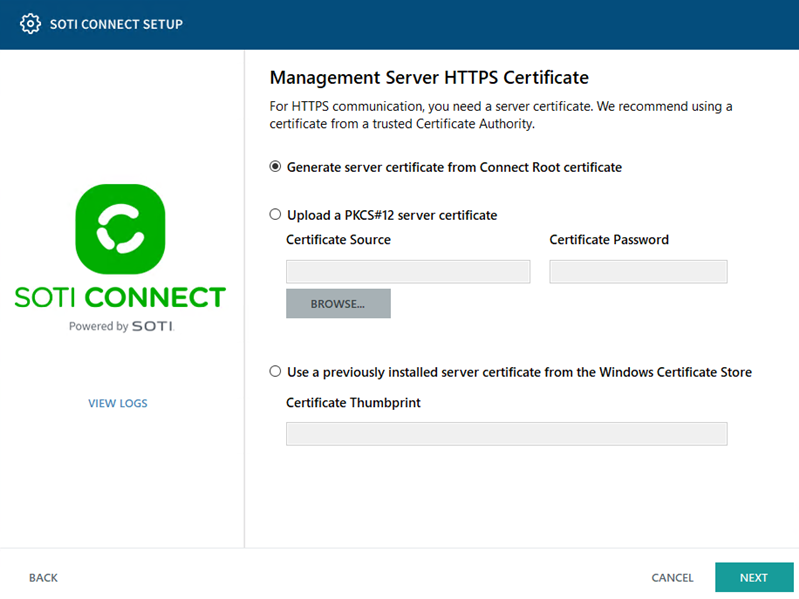
-
On the File Store Service configuration screen, enter the
File Store (FS) hostname, Logging Service network address and port numbers. If
you want to change the FS file system location, select
Browse to use a local file storage or shared network
location path. For setting up a shared network drive, see Setting Up a Shared Network Location and select
Next.
Note: For all-in-one installation scenarios, there is no need to enter the FS hostname network address and port numbers. They are pre-filled with the information entered for the MS.
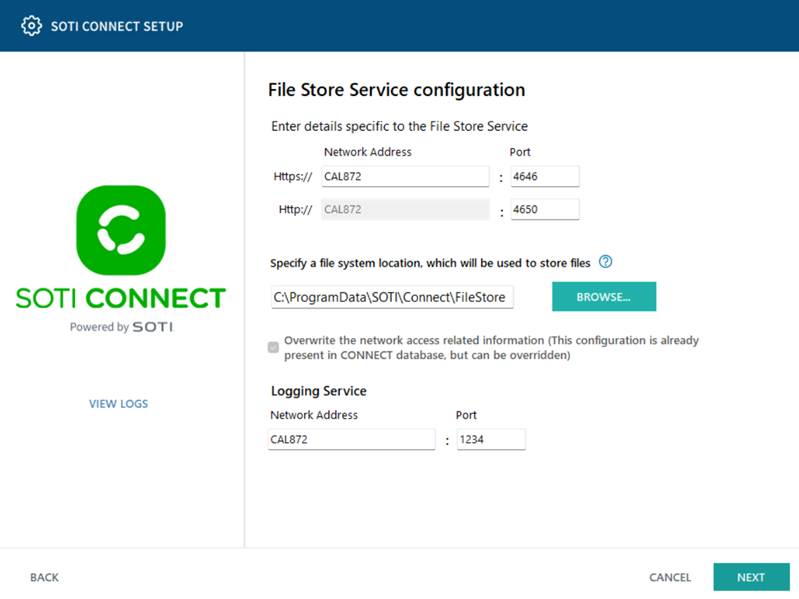
-
On the File Store Service HTTPS Certificate screen.
- Select Generate server certificate from Connect Root certificate. In this case, the MS root certificate (either custom or auto generated) generates the HTTP certificate and used as the FS HTTP root certificate. This option is available only on setups with both FS and MS installed.
- Select Generate server certificate from uploaded root certificate file to upload a custom root HTTP certificate for server HTTP certificate generation and later for validation.
- Select Upload server certificate and corresponding root certificate as files to upload the HTTP root certificate and HTTP server certificate. Use this option if your certificate is from a trusted certificate authority.
- Select Load server certificate and corresponding root certificate from the trust store to upload the HTTP root certificate and HTTP server certificate. Use this option if the certificate you want to use is already installed in the Windows trusted store and you know its thumbprint value.
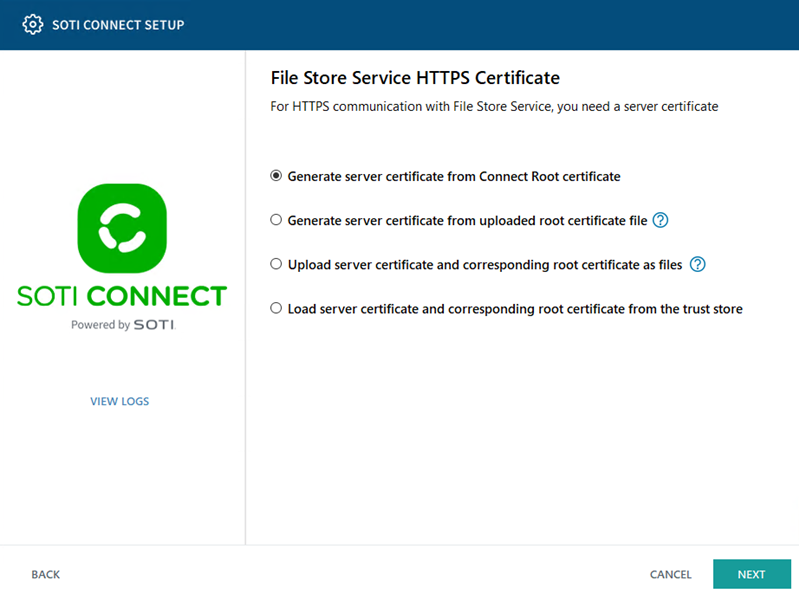
To update HTTPS certificates, see File Store Service (FS).
-
Enter the REST Protocol Adapter details and the network address of the webhook
receiver host and select Next.
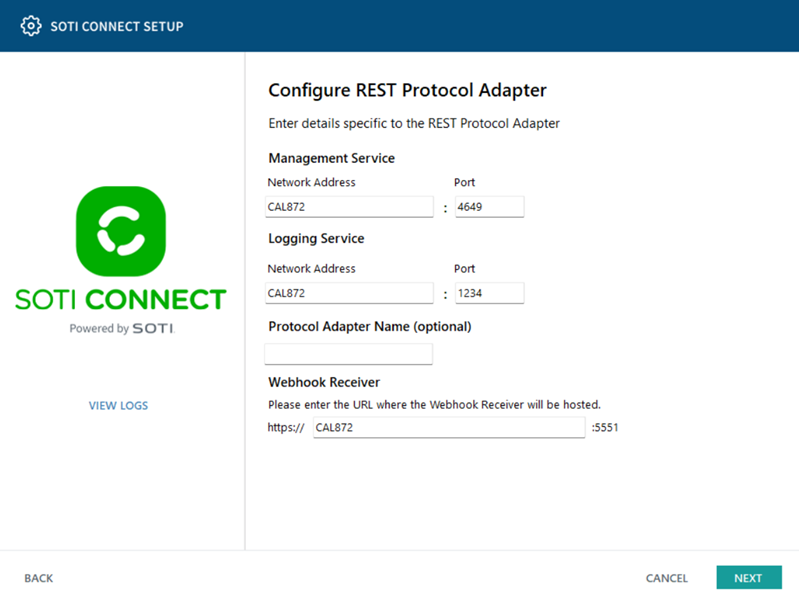
-
On Configure MQTT Protocol Adapter screen, the management
service network address and logging service network address are pre-filled with
information. The connection addresses and ports in this panel must match the
network addresses and ports where these services are listening.
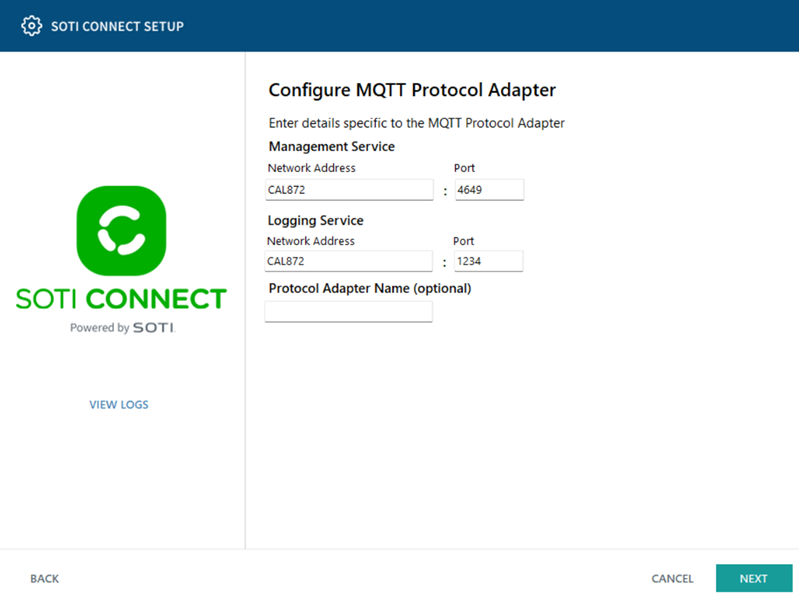
-
Enter the MQTT RPC protocol adapter details and select
Next.
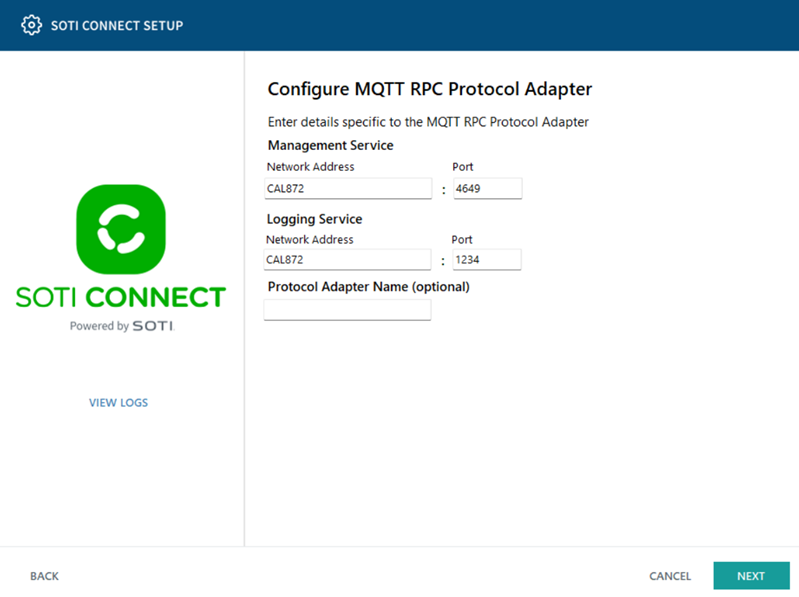
-
Enter the SNMP protocol adapter details and select
Next.
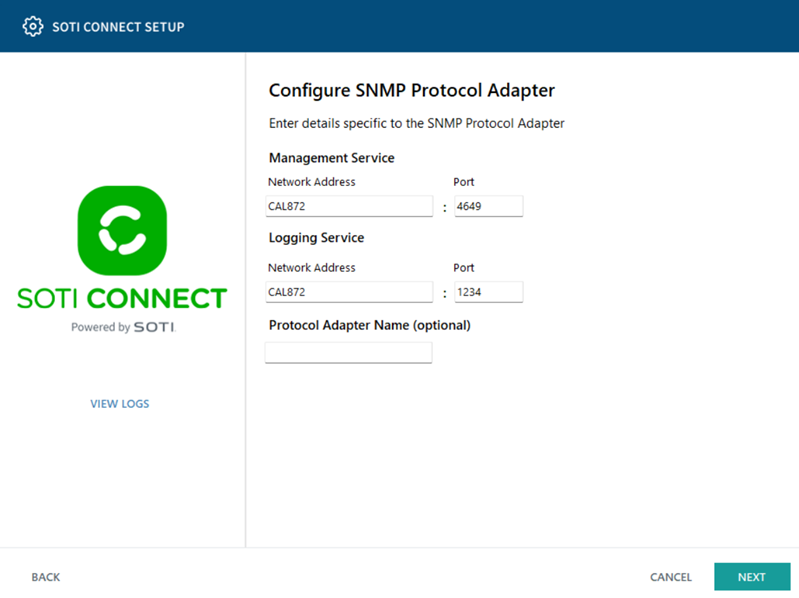
-
Enter the root installation folder, or accept the default location and select
Next.
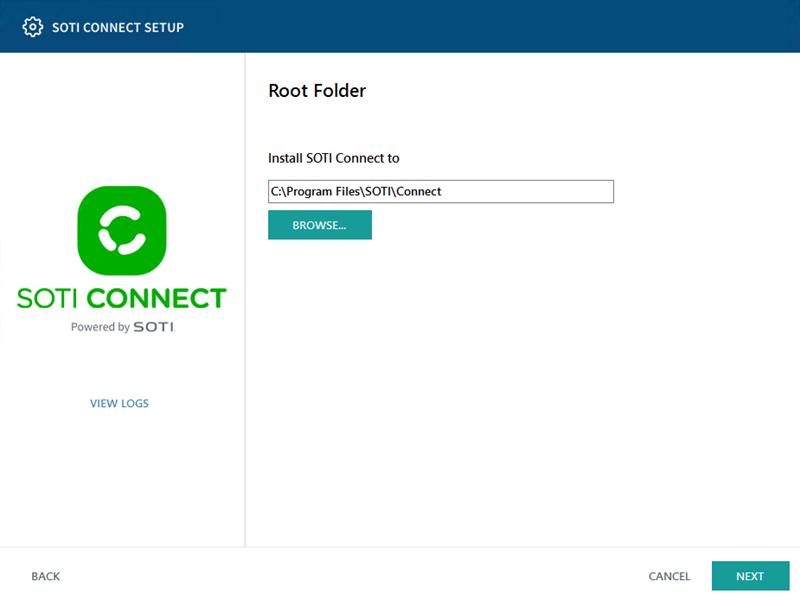
-
Enter the information required to connect to your SQL Server database,
including the FQDN name in the Server field and select
Next.
Important: If you have more than one instance of SQL Server or SQL Server Express running on your machine, be sure to select the right one. The connection string in the Server field can vary.Tip: Select Windows Authentication if that is how you prefer to connect to the SQL Server database. Note that the SOTI Connect service using the database runs as the
LOCAL SYSTEMaccount. If you select Windows Authentication, make sure that the account running the Management Service (the defaultLOCAL SYSTEM) has the required privileges in SQL Server.Note: Database mirroring is not supported.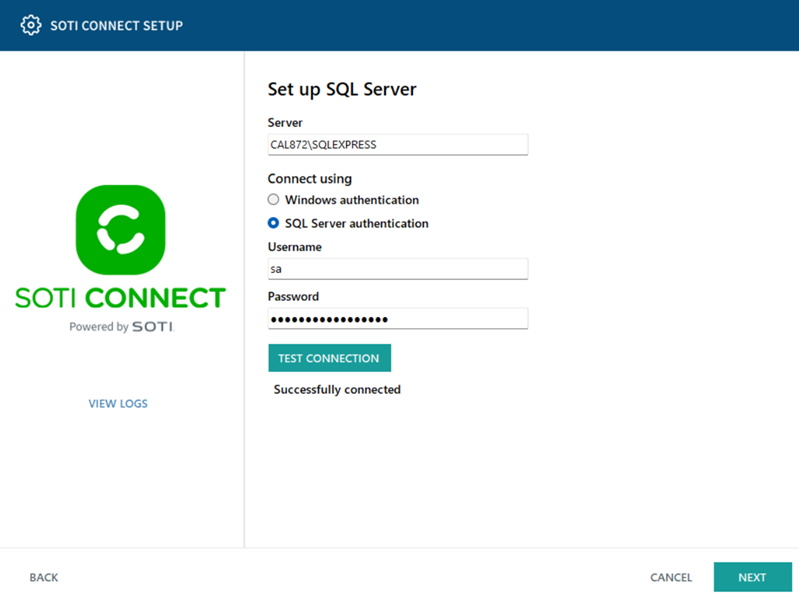 Tip: Select the Test Connection button to check the connection credentials are correct.
Tip: Select the Test Connection button to check the connection credentials are correct. -
Enter the temporary administrator password (you must change it when you log
into SOTI Connect for the first time). Select
Next.
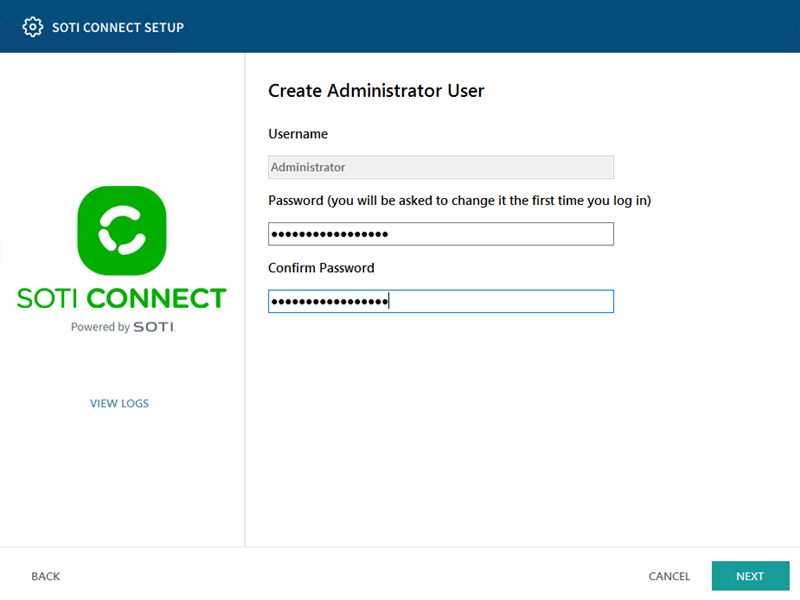
-
Select Install to continue the SOTI Connect installation.

-
When complete, select Finish to exit the installer.
Note: After the installation (or upgrade) is complete, fully exit the installer before continuing.
 Troubleshooting: If an error occurs where a service can not start (such as the one shown below), stop any antivirus applications and re-run the installation.
Troubleshooting: If an error occurs where a service can not start (such as the one shown below), stop any antivirus applications and re-run the installation.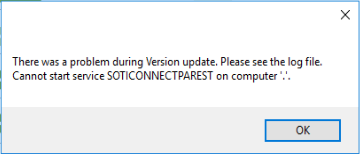
- Select the Open SOTI Connect now link at the bottom of the page.
- Log in with the temporary Administrator password you configured in step 16, and accept the License Agreement.
- Change your temporary password and select Save.
Results
You have successfully installed SOTI Connect.
Tip: If any problems occur during installation, check the logs. To view the
logs, navigate to the installation folder and open the
InstallerUI.log file.
What to do next
Use the Watchdog utility (installed with SOTI Connect) to check that SOTI Connect services are running. You must run the utility as an administrator. You can access it from the same directory where you installed SOTI Connect (\Program Files\SOTI\Connect\Soti.IoT.Watchdog\lib\Release\net472\Soti.IoT.Watchdog.exe).